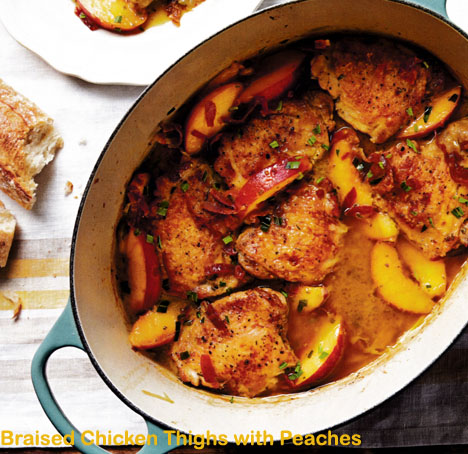
Enlarge image . . . . .
Gary Taubes wrote . . . . . . .
I’ve been eating a high-fat, carb-restricted diet for almost 20 years, since I started as an experiment when investigating nutrition research for the journal Science. I find it’s easy for me to maintain a healthy weight when I eat this way. But even after two decades, the sensation of being on the edge of a slippery slope is ever-present.
The holidays and family vacations are a particular problem. Desserts and sweets, it seems, appear after every lunch and dinner, and I’m not particularly good at saying no when everyone else is partaking. The more sweets I eat, the more we eat as a family, the longer it takes upon returning home before that expectation of a daily treat fades away.
What I’ve realized is that eating a little of a tasty dessert or a little pasta or bread fails to satisfy me. Rather, it ignites a fierce craving for more, to eat it all and then some. I find it easier to avoid sugar, grains and starches entirely, rather than to try to eat them in moderation. The question is why.
To begin to answer that question requires understanding that researchers are generally divided not only on what causes obesity, but also why we have cravings and often fail to stay on diets.
The conventional thinking, held by many of the researchers and clinicians I’ve interviewed over the years, is that obesity is caused by caloric excess. They call it an “energy balance” disorder, and the treatment is to consume less energy (fewer calories) and expend more. When we fail to maintain this prescription, the implication is that we simply lack self-discipline. “It’s viewed as a psychological issue or even a question of character,” said Dr. David Ludwig, who treats obesity at Harvard Medical School.
The minority position in this field — one that Ludwig holds, as do I — is that obesity is actually a hormonal regulatory disorder, and the hormone that dominates this process is insulin. It directly links what we eat to the accumulation of excess fat and that, in turn, is tied to the foods we crave and the hunger we experience. It’s been known since the 1960s that insulin signals fat cells to accumulate fat, while telling the other cells in our body to burn carbohydrates for fuel. By this thinking these carbohydrates are uniquely fattening.
Since insulin levels after meals are determined largely by the carbohydrates we eat — particularly easily digestible grains and starches, known as high glycemic index carbohydrates, as well as sugars like sucrose and high-fructose corn syrup — diets based on this approach specifically target these carbohydrates. If we don’t want to stay fat or get fatter, we don’t eat them.
This effect of insulin on fat and carbohydrate metabolism offers an explanation for why these same carbohydrates are typically the foods we crave most; why a little “slip,” as addiction specialists would call it, could so easily lead to a binge.
Elevate insulin levels even a little, said Dr. Robert Lustig, a pediatric endocrinologist at the University of California, San Francisco, and the body switches over from burning fat to burning carbohydrates.
“The more insulin you release, the more you crave carbs,” he said. “Once you’re exposed to a little carbohydrate, and you get an insulin rise from it, that forces energy into fat cells and that deprives your other cells of the energy they would otherwise have utilized — in essence, starvation. So you compensate by getting hungry, particularly for more carbohydrate. High insulin drives carb-craving.”
The result is that even a bite or a taste of carbohydrate-rich foods can stimulate insulin and create a hunger — a craving — for even more carbohydrates. “There’s no question in my mind,” Lustig said, “that once people who are ‘carboholics’ get their insulin levels down, they become less carboholic. And if they go off the wagon and start eating carbs, they go right back to where they were before. I’ve seen that in numerous patients.”
Sugar and sweets are a particular problem because of several physiological responses that may be unique to sugar. Sugar cravings appear to be mediated through the brain reward center that is triggered by other addictive substances. Both sugar and addictive substances stimulate the release of dopamine, producing an intensely pleasurable sensation.
Researchers like Ludwig and Lustig and others who promote carb-restriction, believe a person can minimize carb cravings by eating lots of healthful fats instead. Fat is satiating, Ludwig said, and it’s the one macronutrient that doesn’t stimulate insulin secretion. Eating fat-rich foods, “helps extinguish binge behavior,” Ludwig said, “as opposed to high-carb foods which exacerbate it.”
Whatever the mechanism involved, if the goal is to avoid the kind of slip that leads from a single forkful of rice to a doughnut binge or falling off your diet for good, then the same techniques that have helped drug addicts avoid relapses should also work in this scenario as well. These basic principles have been developed over decades, said Laura Schmidt, an addiction specialist at the University of California, San Francisco School of Medicine who now studies sugar as well. They can “work for anyone who’s gotten clean and sober and wants to stay that way.”
The obvious strategy is to stay away from the trigger. “Alcoholics who care about staying sober won’t get a job in a bar,” Schmidt said. “It’s harder to avoid junk foods in the food environment around us, but we can certainly clean up our home environment and avoid situations where sugar and other treats are easily available.”
Changing our social networks may be necessary as well — convincing our families and our communities to be invested in eschewing these foods, just as they would help if we were trying to quit cigarettes or alcohol or a harder drug.
Another valuable technique is to learn to plan for and avoid situations that increase cravings. “If I know that at 3 p.m. I have a little slump and will want to go to the vending machine, then I can have food available that’s the equivalent but that won’t trigger a binge,” Schmidt said.
Ultimately, any successful diet is a long-term commitment. We tend to think of diets as something we go on and off. And if we fall off, we think the diet failed. But if we buy into the logic of carb-restricted diets, it implies acceptance of a lifetime of abstention.
“It’s a very powerful system that has to be undone, whether it’s addiction or metabolic disease,” said Schmidt. “It is knitted into the body and mind over years, and getting healthy requires taking the long view as well.”
Source: The Globe and Mail
Filed under: Food, Health, News and Articles | Tagged: Carbohydrate | Comments Off on Why Cutting Carbohydrates from Your Diet Is So Tough








